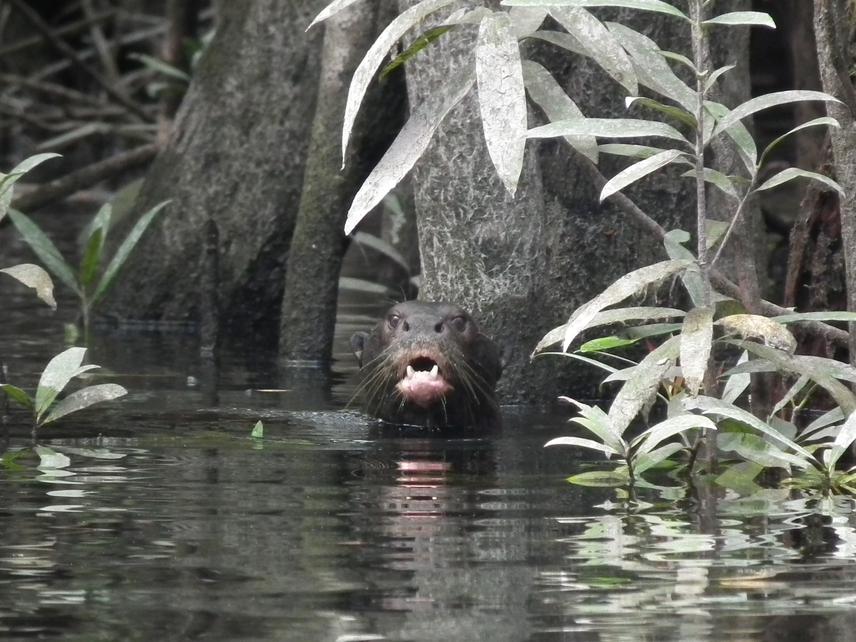Natalia Camps Pimenta
Understanding historical, cultural and environmental factors that are influencing the reoccupation of middle Rio Içana by giant otters, taking into account the indigenous perspective.

Direct sighting of Pteronura brasiliensis at Kahaalipe Lake.
Giant otter (Pteronura brasiliensis) is a semiaquatic mammal endemic from Latin America, which uses water body’s margins as shelter and aquatic environment for locomotion and foraging. As a top predator, giant otter regulates the population size of their prey so its disappearance may cause an alteration of many trophic levels, which makes it be recognized as a keystone specie. The common habitat with humans was a threatening situation to otters due to hunting aiming the fur trade, which caused the species extinction in many areas of historical distribution.
After hunting ban, the species started to show signs of population recovery. However, habitat destruction and slaughter due to conflicts with fishermen still threaten the otter’s recovery. Therefore, to know proper the environmental characteristics for giant otters establishment and perceptions of riparian communities about these animals is essential to the development of effective conservation strategies, seeking to mitigate conflicts and preserving the species habitat.
This work proposes a participatory research with the Baniwa Indians inhabiting the region of the middle Rio Içana to identify environmental, historical and cultural factors that may influence the return of giant otters to the study area. The Içana River is a major tributary of the Rio Negro, which flows the Upper Rio Negro Indigenous Land, where was recently found there the return of giant otters, once considered locally extinct.
To understand the environmental factors it will be selected ten lakes which will be classified according to landscape elements consistent with the species habits species (perimeter, area, shape and isolation of lakes, available dense vegetation, bank slope, water depth and transparency). This elements will be compared with data of animal presence or absence in the sample units, obtained through the detection or non-detection of species direct and indirect signs in each lake studied. Historical and cultural factors will be identified by conducing semi-structured questionnaires with Baniwa indians about commercial hunting and historical occupation by giant otters before local extinction and during its path of reoccupation. Participants will also be questioned about traditional use of lakes and their perception about giant otters, as well its return to Baniwa territory.
This understanding enables the planning of management actions in the region, aimed at regulating the use of the lakes in a sustainable way, avoiding damage to the reoccupation process of giant otters in the area, and at the same time, ensuring the maintenance of the Baniwa people way of life.